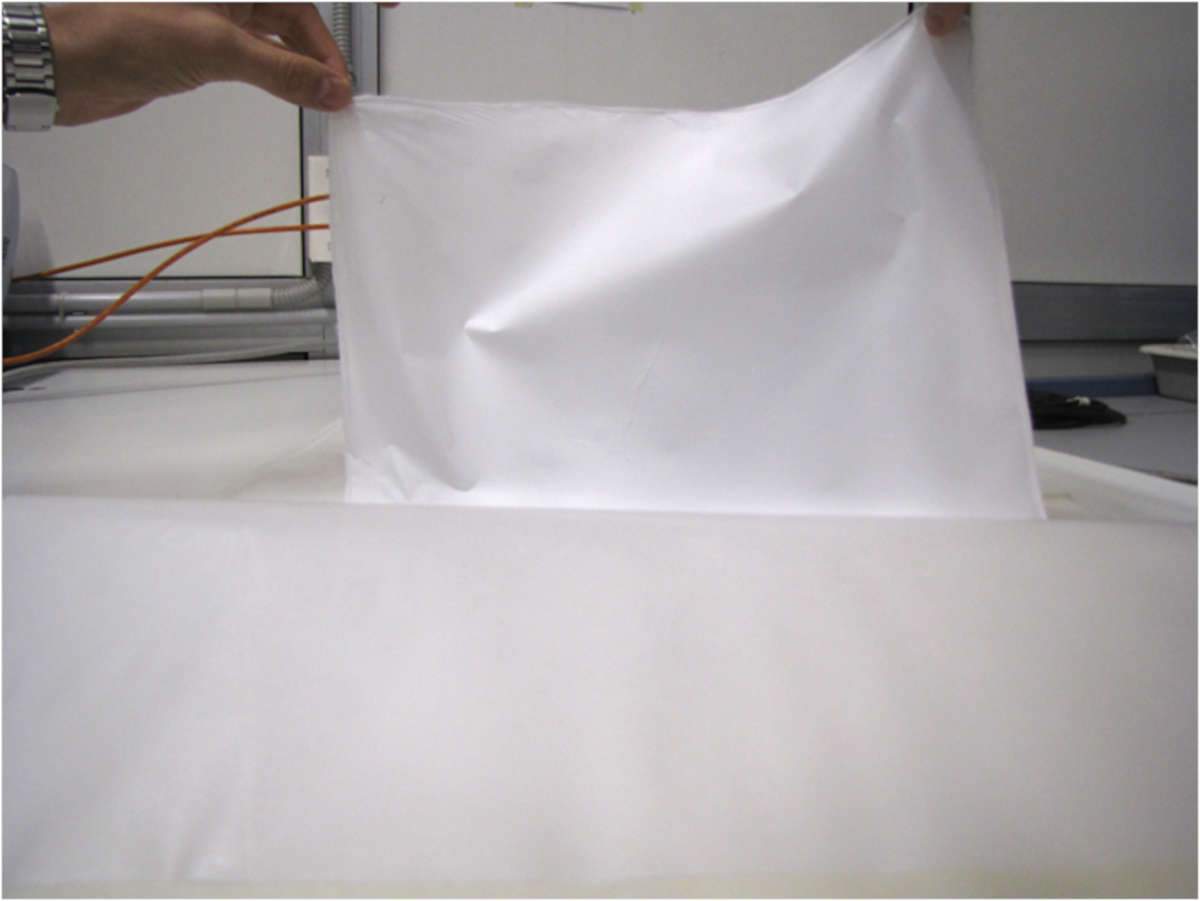A new technology for the restoration of works of art has been patented at theUniversity of Bologna . It is a fabric-nonwoven developed by Giorgia Sciutto and Chiara Gualandi, professors at the Department of Chemistry “Giacomo Ciamician” of the Alma Mater: it is an innovative method for cleaning sensitive surfaces and goods of historical-artistic interest, which stands out for its cost-effectiveness, sustainability and safety. This fabric-nonwoven is produced by electrospinning and, combined with the controlled application of a solvent, is able to remove synthetic and natural paints from paintings, sculptures, archaeological artifacts, archival material or film films.
The process is simple: the fabric is placed on the surface to be cleaned, and within minutes, the solvent interacts with the layer to be removed, which swells and is absorbed into the fabric itself. This solution reduces the risk of damage to the work and limits the use of solvents, bringing both economic and environmental benefits, according to the university. In addition to this, the use of this method results in reduced exposure time to the solvents used, decreasing the risk of operator exposure to potentially toxic substances. In addition, the fabric can be used in combination with environmentally friendly solvents, completely eliminating the risk to the operator. The research team from the University of Bologna, composed of Giorgia Sciutto, Chiara Gualandi, Maria Letizia Focarete (Director of the Department of Chemistry “Giacomo Ciamician”), Rocco Mazzeo, Silvia Prati and Francesca Ramacciotti, actively collaborated in the realization of this innovative project.
“For the cleaning of works of art today, cotton swabs are mostly used: disposable cotton swabs soaked in a solvent, capable of dissolving or swelling the layer of paint you want to remove,” explain Giorgia Sciutto and Chiara Gualandi. “However, this operation requires time, great attention and often the need for repeated actions, because in many cases it is not possible to completely remove the paint layer with a single application.”
“The use of technology also allows the operator a more controlled dosage of the solvent to be used,” Sciutto and Gualandi add. “In fact, controlling the amount of solution is crucial, because a low dosage lowers the effectiveness of the cleaning, while too high a dosage damages the pictorial layers underneath the layer to be removed.” With the Alma Mater’s patented nonwoven, on the other hand, it is no longer necessary to mechanically act on the object to be restored, thus greatly reducing the risk of ruining the work.
 |
| Two University of Bologna professors patent innovative restoration material |
Warning: the translation into English of the original Italian article was created using automatic tools. We undertake to review all articles, but we do not guarantee the total absence of inaccuracies in the translation due to the program. You can find the original by clicking on the ITA button. If you find any mistake,please contact us.